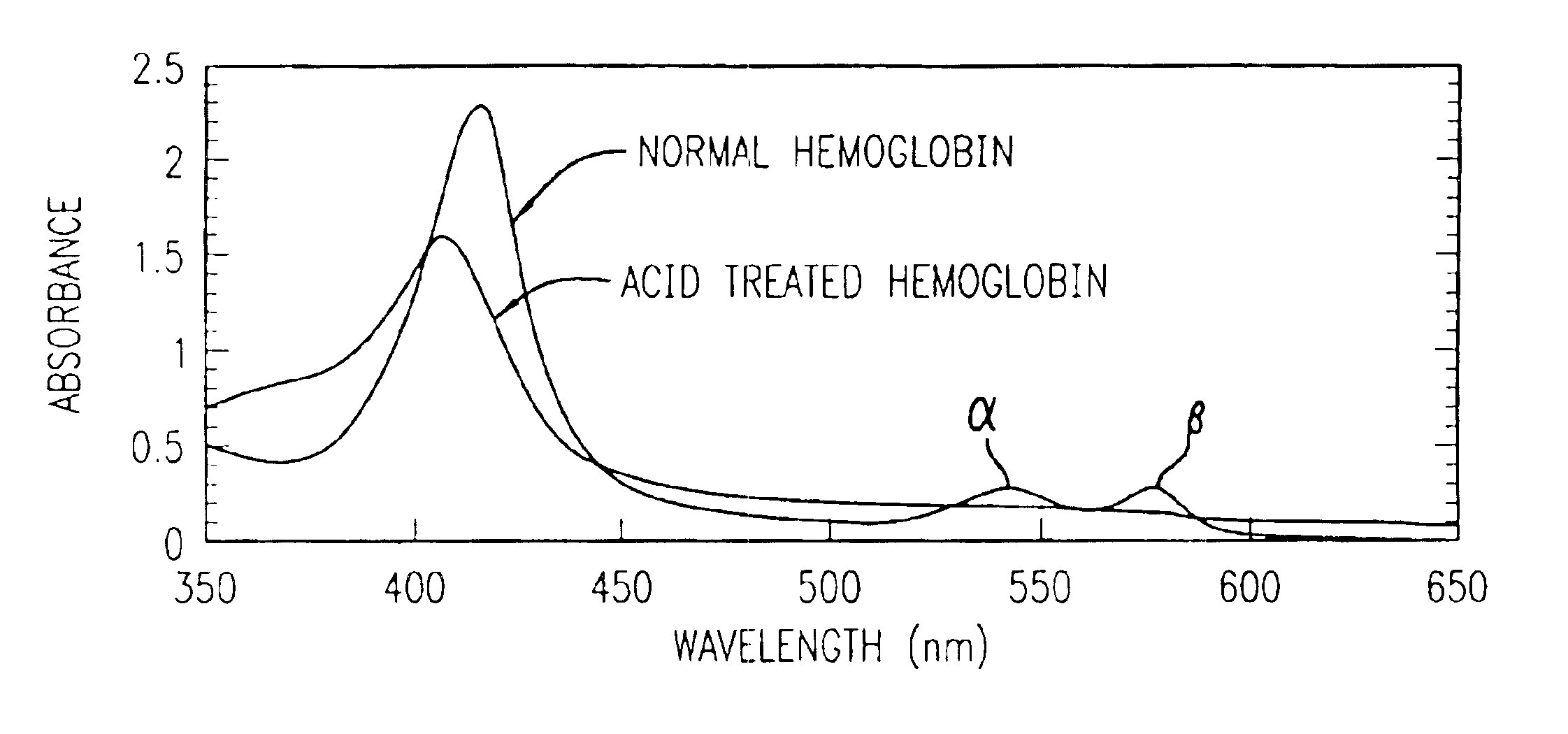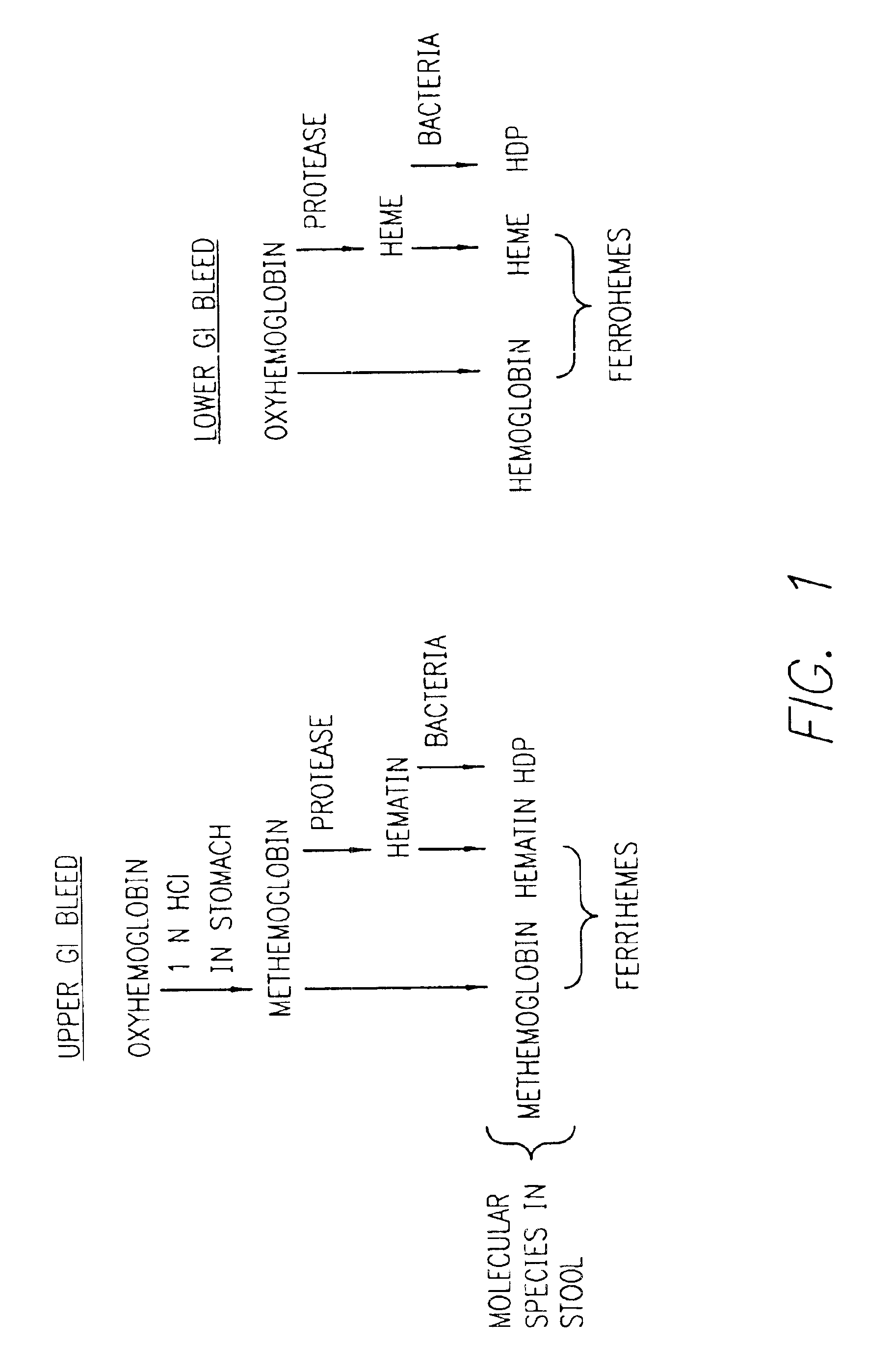Method for determining location of gastrointestinal bleeding
- Summary
- Abstract
- Description
- Claims
- Application Information
AI Technical Summary
Benefits of technology
Problems solved by technology
Method used
Image
Examples
Embodiment Construction
The present invention is based on the fact that the spectral properties of the heme portion of hemoglobin which has passed through the acidic environment of the human stomach are different from the spectral properties of the heme portion of hemoglobin that has passed only through the lower digestive tract. In particular, the stomach excretes hydrochloric acid, which results in an acidic environment that is isotonic with a pH of about 1. This is a unique chemical environment, with essentially all other regions of the body having a pH close to 7.4. As the stomach contents are passed out of the stomach, they are rapidly neutralized to become isotonic, and have a neutral pH. The large intestine absorbs water and electrolytes as it produces a solid stool that is about 70% water, isotonic, with a neutral pH. A major component of the solid material is bacteria. The major pigment in stool is urobilinogen, which is a product of systemic hemoglobin degradation.
Bleeding directly into the GI tr...
PUM
 Login to View More
Login to View More Abstract
Description
Claims
Application Information
 Login to View More
Login to View More - R&D
- Intellectual Property
- Life Sciences
- Materials
- Tech Scout
- Unparalleled Data Quality
- Higher Quality Content
- 60% Fewer Hallucinations
Browse by: Latest US Patents, China's latest patents, Technical Efficacy Thesaurus, Application Domain, Technology Topic, Popular Technical Reports.
© 2025 PatSnap. All rights reserved.Legal|Privacy policy|Modern Slavery Act Transparency Statement|Sitemap|About US| Contact US: help@patsnap.com



